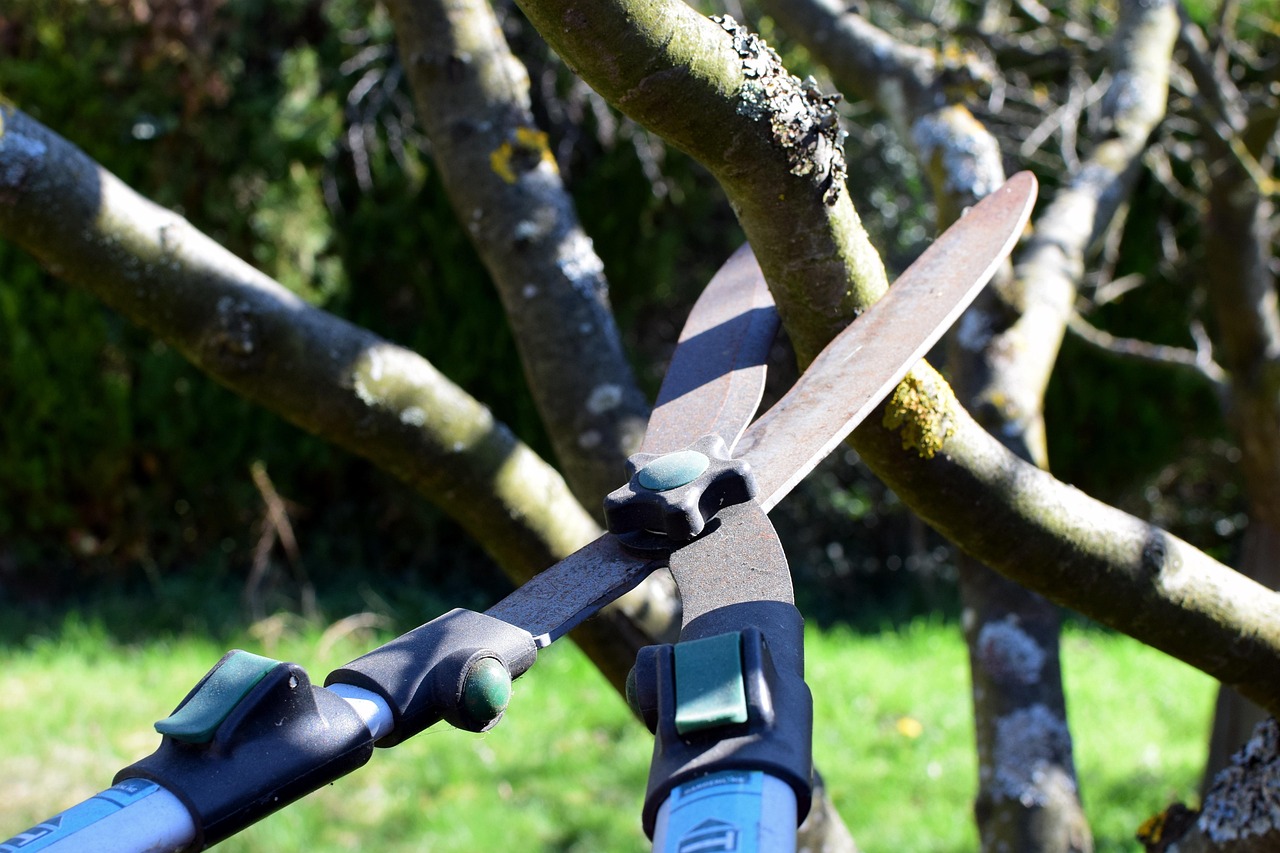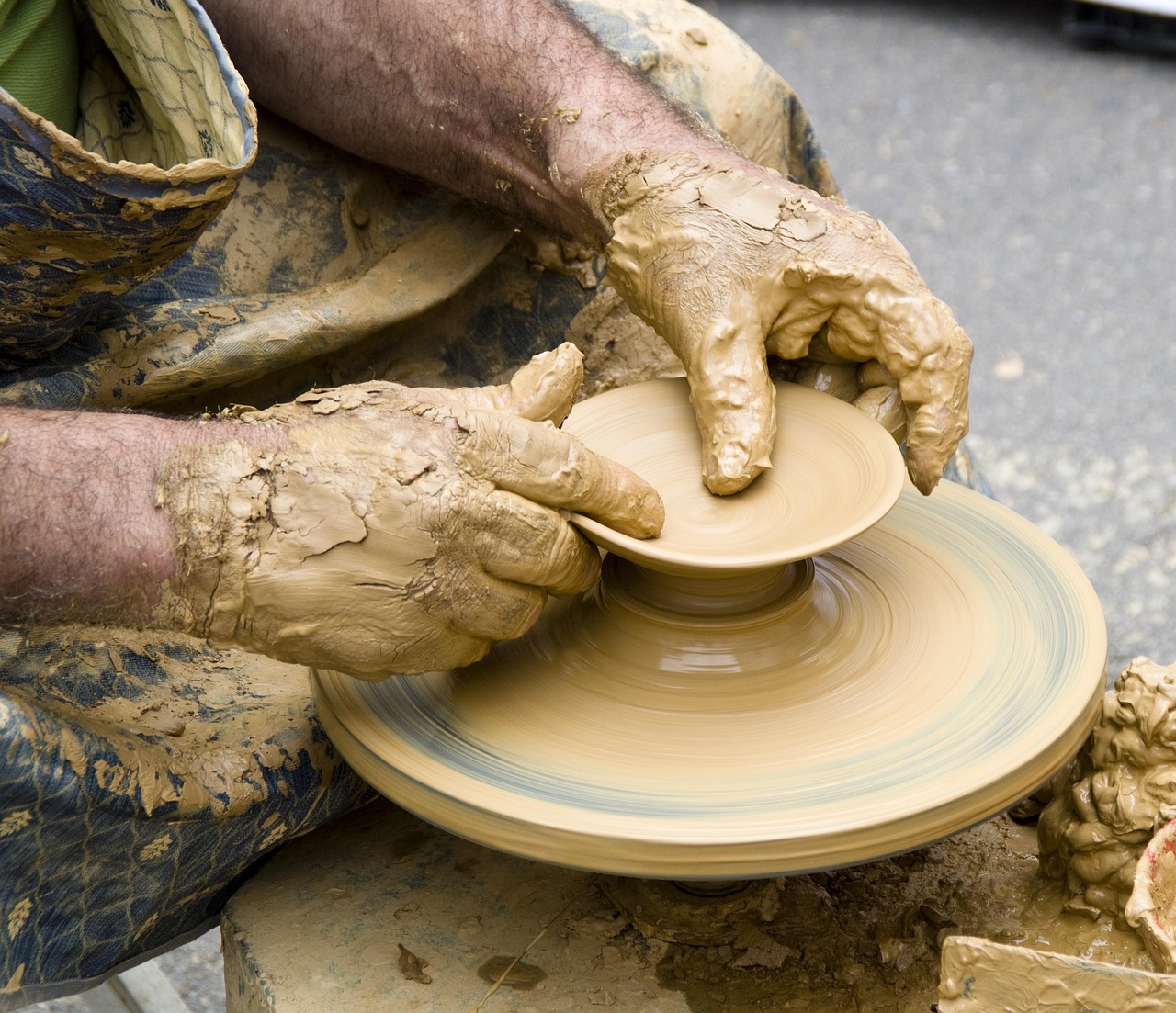Pruning techniques for trees prone to sunscald involve careful trimming to improve light exposure and air circulation. Focus on removing dead or damaged branches and thinning out crowded areas. Proper timing and technique are essential to minimize stress and promote healthy growth.
Sunscald is a condition that affects many tree species, especially those with thin bark. It occurs when the sun’s rays warm the bark during the day. This warmth can cause the bark to become active and then rapidly cool at night, leading to tissue damage. Trees that are particularly vulnerable to sunscald include young trees, trees with thin bark, and those that have been recently transplanted. Understanding how to effectively prune these trees can greatly reduce their chances of experiencing this damaging condition.

Proper pruning not only helps in reducing the risk of sunscald but also enhances the overall health of the tree. It encourages stronger growth and can improve fruit production in fruit-bearing trees. Moreover, making the right cuts allows for better air circulation and light penetration, which are crucial for maintaining a healthy canopy.
Understanding the Impact of Sunscald
Sunscald primarily affects the bark, leading to cracks and peeling. These injuries can make trees susceptible to pests and diseases. Here are some important points regarding sunscald:
- Sunscald typically occurs on the south and southwest sides of trees, where they receive the most sun exposure.
- Young trees are more vulnerable due to their thinner bark.
- Symptoms include discoloration, cracks, and sometimes even dieback in severe cases.
To prevent sunscald, it is essential to implement appropriate pruning techniques. The timing of pruning is critical; late winter or early spring is often the best time to prune trees that are susceptible to sunscald. This timing allows trees to heal before warmer weather sets in. Additionally, understanding the growth habits of specific tree species can guide effective pruning practices.

Pruning Techniques for Sunscald-Prone Trees
When pruning trees vulnerable to sunscald, certain techniques can minimize damage while promoting healthy growth. The following methods are widely recommended:
1. Thinning
Thinning involves selectively removing branches to reduce crowding. This technique improves light penetration and air circulation within the tree canopy. When thinning:
- Identify weak or crossing branches that may compete for space.
- Focus on removing branches that grow inward toward the center of the tree.
- Aim to maintain a balanced shape, ensuring sunlight reaches all parts of the tree.
2. Heading Cuts
Heading cuts involve shortening branches to encourage bushier growth. This technique can be beneficial if done correctly:

- Make cuts above a node to promote new growth.
- Avoid cutting too much at once; it can stress the tree.
- Consider using heading cuts sparingly on young trees.
3. Removing Damaged Wood
Removing dead or damaged branches is crucial in preventing further injury and disease spread:
- Cuts should be made at the branch collar, which is the swollen area at the base of the branch.
- This helps the tree heal more effectively and prevents infection.
4. Avoiding Topping
Topping is an aggressive pruning technique that removes large portions of the tree crown. It can lead to sunscald by exposing new growth to harsh sunlight:
- Instead of topping, opt for selective pruning methods.
- Topping can create stress and encourage weak growth.
Tools Needed for Pruning
Using the right tools is essential for effective pruning. Here are some common tools used:

| Tool | Description | Use |
|---|---|---|
| Hand Pruners | Small tools ideal for cutting branches up to ½ inch thick. | For precise cuts on small branches. |
| Loppers | Larger tools suitable for cutting thicker branches up to 2 inches thick. | For reach and leverage on medium-sized branches. |
| Saw | A pruning saw or chainsaw for larger limbs. | For cutting large branches safely. |
| Safety Gear | Includes gloves, goggles, and hard hats. | To protect yourself while pruning. |
By employing these pruning techniques and using the right tools, you can significantly reduce the likelihood of sunscald in your trees. Proper care will lead to healthier trees that thrive in their environments.
Timing Your Pruning for Maximum Effectiveness
Timing plays a critical role in the effectiveness of pruning techniques. The right timing can help trees recover quickly and minimize the risk of sunscald. Understanding the growth cycles of trees is essential for effective pruning.
Best Times to Prune
The best time to prune trees prone to sunscald typically depends on the species and local climate. Generally, late winter or early spring is recommended. This timing allows trees to heal before the active growing season begins. Here are some key considerations:
- Late Winter: This is often the best time for most deciduous trees. During this period, trees are still dormant, reducing stress from pruning.
- Early Spring: Pruning just before new growth begins can stimulate healthy growth and minimize sunscald risk.
- Avoid Late Summer: Pruning during late summer or fall can expose fresh cuts to harsh sun conditions, increasing the risk of sunscald.
Understanding Tree Dormancy
Tree dormancy is a natural phase where growth slows down significantly. During dormancy, trees conserve energy and resources. Pruning during this time allows for:
- Less sap loss, which can occur when trees are actively growing.
- Reduced susceptibility to pests and diseases.
- More robust recovery and regrowth in the spring.
Identifying Sunscald Symptoms
Recognizing the symptoms of sunscald is crucial for timely intervention. Early detection can help prevent further damage to your trees. Here are common signs to watch for:
- Discoloration: Affected areas may appear light brown or whitish on the bark.
- Cracks: Vertical cracks may develop in the bark, which can compromise the tree’s integrity.
- Peeling Bark: Bark may start to peel away from the tree, leading to exposed tissue that is vulnerable to pests.
- Dieback: Severe cases can result in dieback of branches, impacting the overall health of the tree.
Preventative Measures Beyond Pruning
In addition to pruning, there are several preventative measures that can help protect trees from sunscald. These methods can be used in conjunction with proper pruning techniques to enhance tree health.
Applying Protective Wrapping
Wrapping young trees with protective materials can shield them from direct sunlight. When using this method:
- Select breathable materials like burlap or specialized tree wraps.
- Avoid using plastic wraps, as they trap moisture and heat.
- Wrap trees from the ground up to the first set of branches for maximum protection.
Choosing the Right Tree Species
Opting for tree species that are naturally resistant to sunscald can significantly reduce risks. Consider the following when selecting trees:
- Thicker Bark: Trees with thicker bark tend to be more resilient against sunscald.
- Localized Adaptation: Choose species that are well-adapted to your local climate and soil conditions.
Providing Adequate Mulching
Mulching around the base of trees helps retain moisture and regulate soil temperature. Consider these benefits:
- Reduces competition from weeds that may steal nutrients.
- Keeps soil temperature stable, protecting roots from extreme conditions.
- Aids in moisture retention, which is essential during hot weather periods.
Monitoring and Maintenance Practices
Continuous monitoring and maintenance practices are vital for the long-term health of trees prone to sunscald. Regular checks can help catch any issues early on. Here are some recommended practices:
Routine Inspections
Conducting routine inspections helps identify potential problems before they escalate. During your checks:
- Look for signs of sunscald or other damage.
- Assess overall growth patterns and health of leaves and branches.
- Keep an eye on pest populations that may pose a threat.
Nourishment and Fertilization
Nourishing your trees with appropriate fertilizers can promote robust growth. Consider these aspects:
- Select fertilizers based on soil tests to ensure proper nutrient balance.
- Avoid over-fertilizing, which can lead to excessive growth that increases vulnerability to sunscald.
| Nutrient | Function | Source |
|---|---|---|
| Nitrogen | Promotes leaf and stem growth. | Organic compost, manure |
| Phosphorus | Aids root development and flowering. | Bone meal, rock phosphate |
| Potassium | Enhances overall tree health and disease resistance. | Kelp meal, wood ash |
By implementing these monitoring and maintenance practices alongside effective pruning techniques, you can create a healthy environment that minimizes the risk of sunscald while promoting vigorous tree growth. Each step taken adds layers of protection to ensure your trees thrive through all seasons.
Understanding Specific Tree Species and Their Vulnerability to Sunscald
Different tree species exhibit varying degrees of vulnerability to sunscald. Understanding these differences can aid in selecting the right trees for your landscape and applying targeted care. Here, we explore some common tree species known for their susceptibility to sunscald and the specific care they require.
Common Trees Prone to Sunscald
Some tree species are particularly susceptible to sunscald due to their bark characteristics and growth habits. Below are a few examples:
- Maple (Acer spp.): Maples, especially young specimens, have thin bark that can easily suffer from sunscald. Regular pruning and protective wrapping can help mitigate this risk.
- Birch (Betula spp.): Birch trees are known for their beautiful bark but are also prone to sunscald. Protecting young birch trees with wraps during winter is advisable.
- Cherry (Prunus spp.): Cherry trees, especially ornamental varieties, can be affected by sunscald. Proper pruning and location choice are vital for their health.
- Pine (Pinus spp.): Certain pine species can experience sunscald, particularly when young. Ensuring adequate coverage from surrounding plants can offer protection.
Strategies for Managing Sunscald in Specific Trees
Each tree species requires unique management strategies to minimize the risk of sunscald. Here are tailored strategies for some of the common species mentioned above:
Maple Trees
Maple trees thrive in many environments but require careful attention in sunny locations. Here are some management tips:
- Prune in late winter to encourage strong growth before summer.
- Apply a protective wrap on the south side of young maples during winter.
- Monitor for pests and diseases, as stressed trees are more vulnerable.
Birch Trees
Birch trees add beauty to landscapes but necessitate specific care:
- Use breathable wraps to protect young birches from sun exposure.
- Prune during dormancy to minimize stress and promote healing.
- Ensure proper watering during dry spells to maintain health.
Cherry Trees
Cherry trees require attention to both sun exposure and pests:
- Prune cherries after blooming to minimize the risk of disease.
- Avoid heavy pruning that could expose the tree to excessive sunlight.
- Provide shade cloth during particularly hot days in early spring.
Pine Trees
Pine trees can benefit from specific strategies to prevent sunscald:
- Create a mixed planting area with other trees to provide natural shade.
- Prune pines carefully to maintain their natural shape without excessive exposure.
- Consider using mulch around the base to regulate soil temperature.
The Role of Environmental Factors in Sunscald Risk
The environment plays a significant role in determining the risk of sunscald in trees. Factors such as location, climate, and soil quality can influence how trees respond to sunlight and temperature fluctuations.
Climate Considerations
Different climates can affect how trees react to sun exposure. Here are some considerations:
- Temperature Fluctuations: Rapid temperature changes between day and night can increase sunscald risk. Trees in areas with mild winters are less likely to suffer.
- Sun Exposure: Trees planted in full sun may need additional protection compared to those that receive partial shade.
- Humidity Levels: High humidity can mitigate some risks by keeping bark temperatures more stable.
Soil Quality and Drainage
The health of a tree starts with its roots, making soil quality crucial:
- Nutrient-Rich Soil: Well-nourished soil promotes healthier bark that can resist sunscald better.
- Good Drainage: Ensure proper drainage to avoid waterlogged conditions that stress trees.
- Organic Matter: Incorporating organic matter improves soil structure and moisture retention.
The Importance of Education and Community Resources
Staying informed about tree care practices is essential for effective management of sunscald. Community resources can provide valuable information and support for tree care enthusiasts.
Local Extension Services
Your local agricultural extension office often offers resources for tree care:
- Workshops on pruning techniques and tree health.
- Guides on local tree species and their care requirements.
- Access to expert advice tailored to your region’s climate.
Community Gardening Programs
Participating in community gardening programs can enhance your knowledge and skills:
- You can learn from experienced gardeners about best practices for tree maintenance.
- Collaborative projects often provide hands-on experience with pruning and care techniques.
- You can share knowledge about dealing with challenges like sunscald with fellow enthusiasts.
| Resource Type | Description | Benefits |
|---|---|---|
| Workshops | Educational sessions on pruning and tree maintenance. | Hands-on experience and expert guidance. |
| Guides | Printed or digital materials on tree species care. | Detailed information tailored to local conditions. |
| Networking Events | Opportunities to connect with other gardeners. | Sharing experiences and solutions for common challenges. |
By leveraging community resources and education, you can enhance your ability to manage trees susceptible to sunscald effectively. Knowledge is a vital tool in creating a vibrant, healthy landscape where trees can thrive despite environmental challenges.
Advanced Pruning Techniques for Sunscald Prevention
As you delve deeper into the world of tree care, exploring advanced pruning techniques can provide further benefits in combating sunscald. These methods go beyond basic pruning and can optimize tree health and resilience.
Selective Pruning for Sunscald Resistance
Selective pruning is a technique that focuses on removing specific branches rather than indiscriminately cutting. This method can greatly enhance sunlight distribution and reduce the risk of sunscald:
- Identify Dominant Branches: Focus on maintaining strong, healthy branches that will form the primary structure of the tree.
- Remove Competing Branches: Eliminate branches that compete with the dominant ones to allow for better light penetration.
- Create a Balanced Canopy: Aim for a well-distributed canopy that allows sunlight to reach all parts of the tree.
Crown Reduction Techniques
Crown reduction is a more advanced technique that can be particularly beneficial for taller trees prone to sunscald:
- Gradual Reduction: Reduce the height of the tree slowly over a few years to avoid shocking the plant.
- Maintain Natural Shape: Ensure that cuts follow the natural lines of the tree to maintain aesthetic appeal.
- Focus on Upper Crown: Reducing the upper crown can help limit exposure of lower branches, which are often more susceptible to sunscald.
Training Young Trees
Training young trees through formative pruning can set them up for long-term health and resilience:
- Establish a Strong Framework: Early pruning should focus on developing a strong central leader and well-spaced lateral branches.
- Encourage Lower Branch Growth: Allowing lower branches to grow encourages better bark development and shields the trunk from intense sunlight.
- Monitor Growth Regularly: Adjust training techniques based on the tree’s growth pattern and environmental changes.
The Role of Mulching and Soil Health in Sunscald Prevention
In addition to pruning, mulching and maintaining soil health play vital roles in preventing sunscald. Proper mulching techniques not only protect roots but also create a favorable microenvironment around the tree.
Effective Mulching Techniques
Applying mulch around the base of trees offers numerous benefits:
- Temperature Regulation: Mulch helps keep soil temperatures consistent, protecting roots from extreme heat or cold.
- Moisture Retention: It reduces evaporation, ensuring that the tree has adequate moisture during dry spells.
- Weed Control: A layer of mulch suppresses weed growth, allowing trees to access more nutrients.
Choosing the Right Type of Mulch
The type of mulch used can significantly affect its effectiveness. Here are some options:
- Organic Mulch: Materials like wood chips, bark, and straw decompose over time, enriching soil health.
- Inorganic Mulch: Stones or rubber mulch can be used for decorative purposes but may not improve soil quality as much as organic options.
The Importance of Community Engagement in Tree Care
Engaging with local community initiatives can enhance your knowledge and skills in tree care. Being involved fosters a sense of responsibility toward your environment and promotes better practices among fellow gardeners.
Participating in Local Tree Planting Events
Tree planting events not only contribute positively to your community but also provide practical experience with tree care:
- Learn from Experts: Many events feature experienced arborists who can share valuable insights on tree selection and care.
- Hands-On Experience: Participation allows you to practice planting and care techniques under supervision.
- Building Community: These events foster relationships with other tree enthusiasts, creating a network of support and knowledge-sharing.
Final Thoughts
Caring for trees prone to sunscald requires a multi-faceted approach that includes proper pruning, understanding species-specific needs, and implementing preventative measures. By combining these strategies with community resources and advanced techniques, you can effectively promote healthier trees that thrive in their environments.
Knowledge is essential in combating challenges like sunscald. Regular education, participation in community initiatives, and practical experience will empower you as a gardener. Ultimately, investing time and effort into understanding tree care leads to robust trees that enhance the beauty and health of your landscape.
As you continue your journey in tree care, remember that each tree is unique. By being observant and responsive to their needs, you can ensure they flourish for years to come. Embrace the challenges, learn continuously, and enjoy the rewards of nurturing beautiful, resilient trees in your environment.
